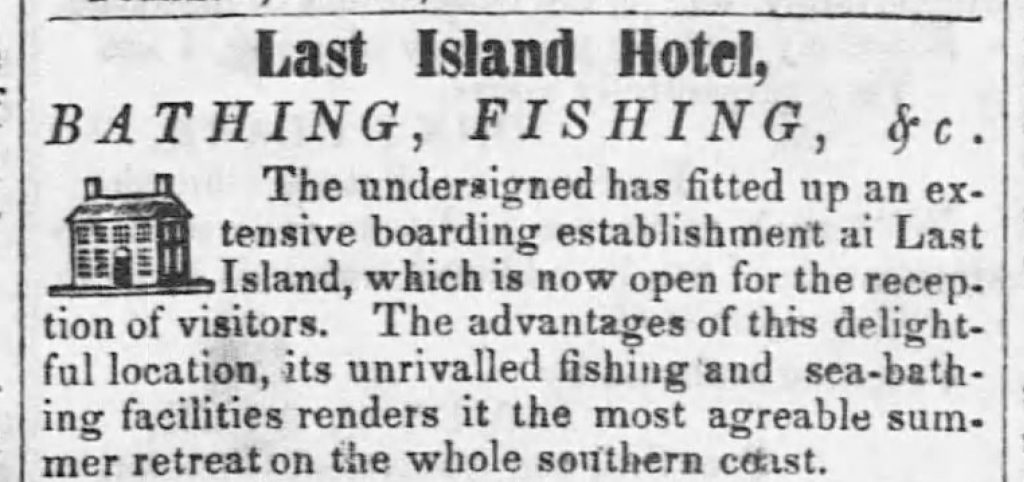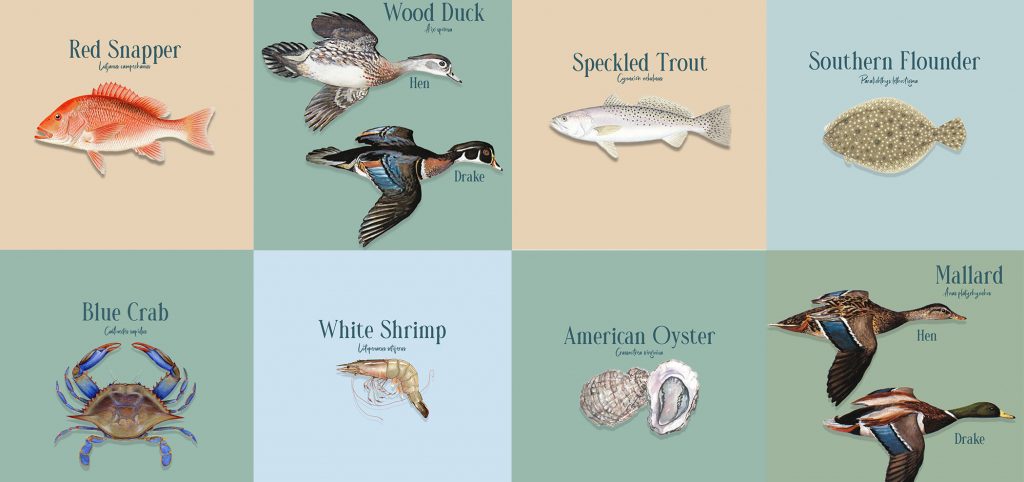A Resort is Born

By Michael Gros Brand & Visual Editor “Five years ago Last Island boasted only a few fisherman’s huts – its beach served the useful purpose of drying fishermen’s nets. Today it has a fine hotel, and more than twenty commodions private residences, all occupied during the summer: its beautiful beach, twenty-one miles in length, smooth as a mirror and elastic as a spring-board, teems every evening with people, composed of sober-sided old gentlemen as pedestrians, fast young men and ladies on horseback, and carriages innumerable whirling along at a pace that would astonish the frequenters of the shell road, freighted with the fair daughters of Western Louisiana.” By the 1840s, developers began to purchase land from the US government for $2 an acre, which is about $52 in today’s currency. While planters were building summer homes on the island, there was an outcry for more accommodations than what was already provided. In 1848, the four Muggah brothers along with financers from St. Mary Parish developed the Ocean House Hotel. The goal was to make this the finest summer resort in the south and wanted to rival the summer getaways of places like Newport. A getaway that gave relief from the summer heat as well as yellow fever. The Ocean House Hotel is sometimes known as John Muggah’s Ocean House Hotel, The Muggah’s Hotel, the Last Island Hotel, or, as it was said in an open letter to The Daily Delta, Last Island St. Charles. It was not a grand structure, rather a two-story wooden structure that was said to be of “considerable strength.” There were about 40 rooms, to which one guest said, “Behind the hotel was a dock where island visitors would disembark the Muggah-owned Steamer The Star. The Star would ferry island visitors to and from the mainland, once in the morning and once in the evening. By 1856, the New Orleans/Opelousas railway connected to the Great Western Railway offered people passage to the Algiers station for only $3.50, roughly $100 today, and half fare for children and servants. The hotel included many amenities including a billiard hall, bowling, a carousel and ballroom. However, the place that everyone seemed to gather and enjoy themselves was the restaurant. Upon entering the restaurant, you were greeted by accomplished hostess, Mrs. Pecot. Being on the coast offered a wide variety of fish, terrapin, and shellfish, and Captain Dave Muggah, President of the Last Island Dinner Club, was there to navigate guests through the various seafood options. A bar was kept by Mr. Martin with wine and sangarees. According to Directions For Cookery In Its Various Branches by Miss Leslie, an 1837 cookbook, she describes the sangaree as the following: “Mix in a pitcher or in tumblers one-third of wine, ale or porter, with two-thirds of water either warm or cold. Stir in sufficient loaf-sugar to sweeten, and grate some nutmeg into it.” “The hotel at this place is very well kept; the table generally abounds with every luxury and delicacy within the control of the proprietors, whose extreme attention and politeness to their guests and solicitude for their comforts, contribute to render this a very desirable sojourn during summer.” The Daily Delta, August 20, 1854 By the early 1850s, there was a major outcry for more accommodations on the island. The four Muggah Brothers heard this, and in conjunction with the St. Charles Hotel in New Orleans, plans for a bigger, more elaborate hotel dubbed the Tradewinds Hotel were being drafted. Construction was slated to begin after the summer season in 1856. Directly to the west, about several hundred yards was the Last Island Village. In this village, David Muggah also owned a hotel called the Waxota. The village also consisted of several gambling establishments, a racetrack and livery and the beginning of around 100 summer homes for the planters that stretched to Racoon Point. During those lazy, summer days, people were able to walk the pristine beach, go for a joyride on horseback or by carriage and take a spin on the carousel. Because this oasis was built on fishing, men were able to take paddle boats out into the gulf and neighboring Lake Pelto to fish for flounder, pompano, and red snapper. Directly to the east of the hotel, not much is known about development. Various maps and the 1853 U.S. Geologic survey list this area as the duck ponds. Today, we know the Louisiana duck season to be early November to early January. “Shooting and riding and boating are the sports in which the ladies most indulge; in both of which two ladies from Iberville are preeminently superior to all others. They are dead shots, and whenever they sally forth with dogs and guns they bag more game in an hour than any two gentlemen on the island could do in double that time. One of these ladies is the most intrepid, graceful and daring rider that I have ever seen. She seems as much in her element on a prancing pony, bounding over logs, rails and fences and bayous, as she does in dancing the quadrille or polka, in either of which she displays that grace and elegance which always distinguish the Creole ladies of Louisiana.” The Delta in New Orleans (August 20, 1854) drawing resorters Previous Next a refuge from YELLOW FEVER watch a video about Yellow Fever in New Orleans by the Historic New Orleans Collection an island meal traveling to Isle Dernière The trip to Isle Dernière took days with travelers going by rail to steamboat in the gulf or by steamboat along the bayous and then into the gulf to the island.
The Island Oasis

the wildlife Wildlife flourished along the coast of Louisiana, especially around the barrier islands. This abundance is part of what drew people to the island to establish the resort. in the ocean White Shrimp Speckled Trout Southern Flounder Red Drum Pompano Brown Shrimp Red Snapper Amercian Oyster Blue Crab in the air Wood Duck Mallard Green-winged Teal Gadwall Blue-winged Teal American Wigeon American Black Duck the diary of an Explorer Alvar Nuñez Cabeza De Vaca, a Spanish explorer, kept a diary of his experiences in the Gulf of Mexico in 1542. Read Diary PODCAST Dr. Gary LaFleur, Louisiana native and professor of biological sciences at Nicholls State University, discusses Isle Dernière before it became a popular resort. Garde Voir Ci · Season 3, Episode 1 – Isle Dernière Before the Storm with Dr. Gary Lafleur
